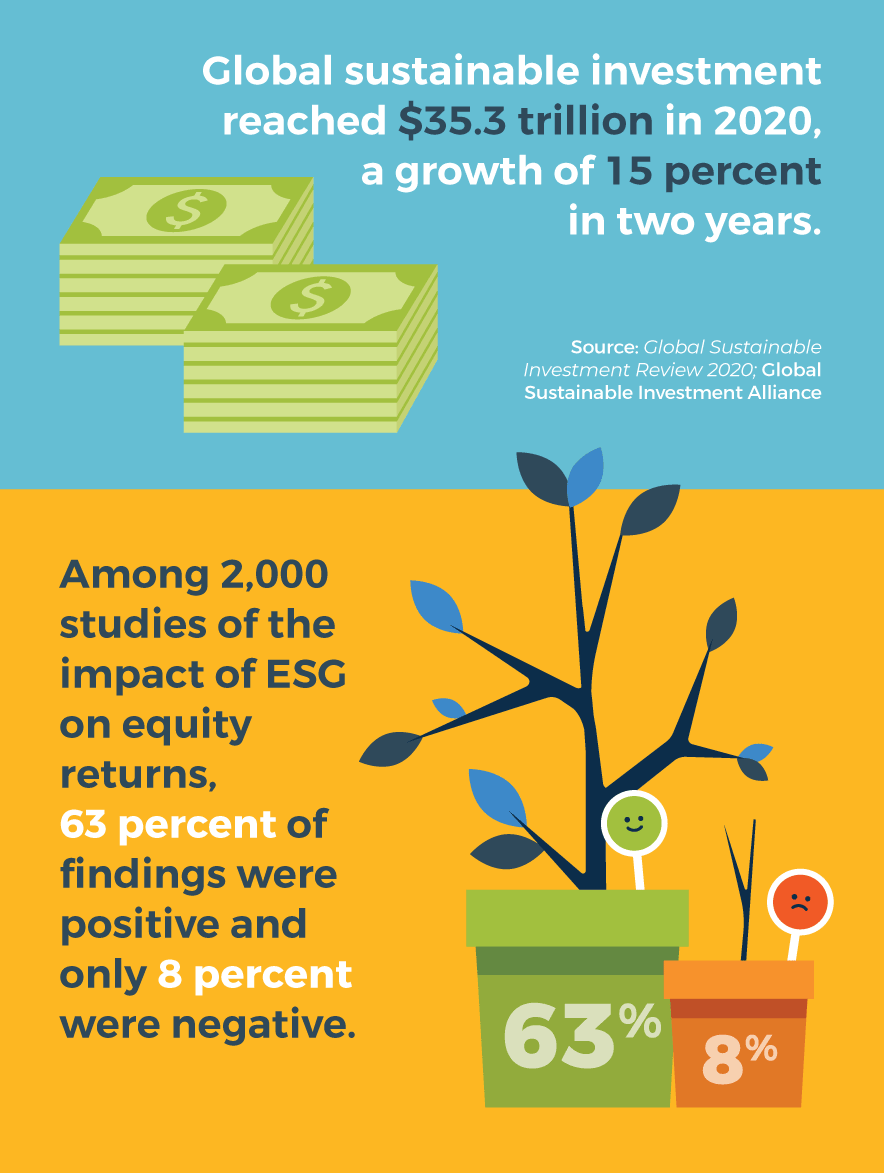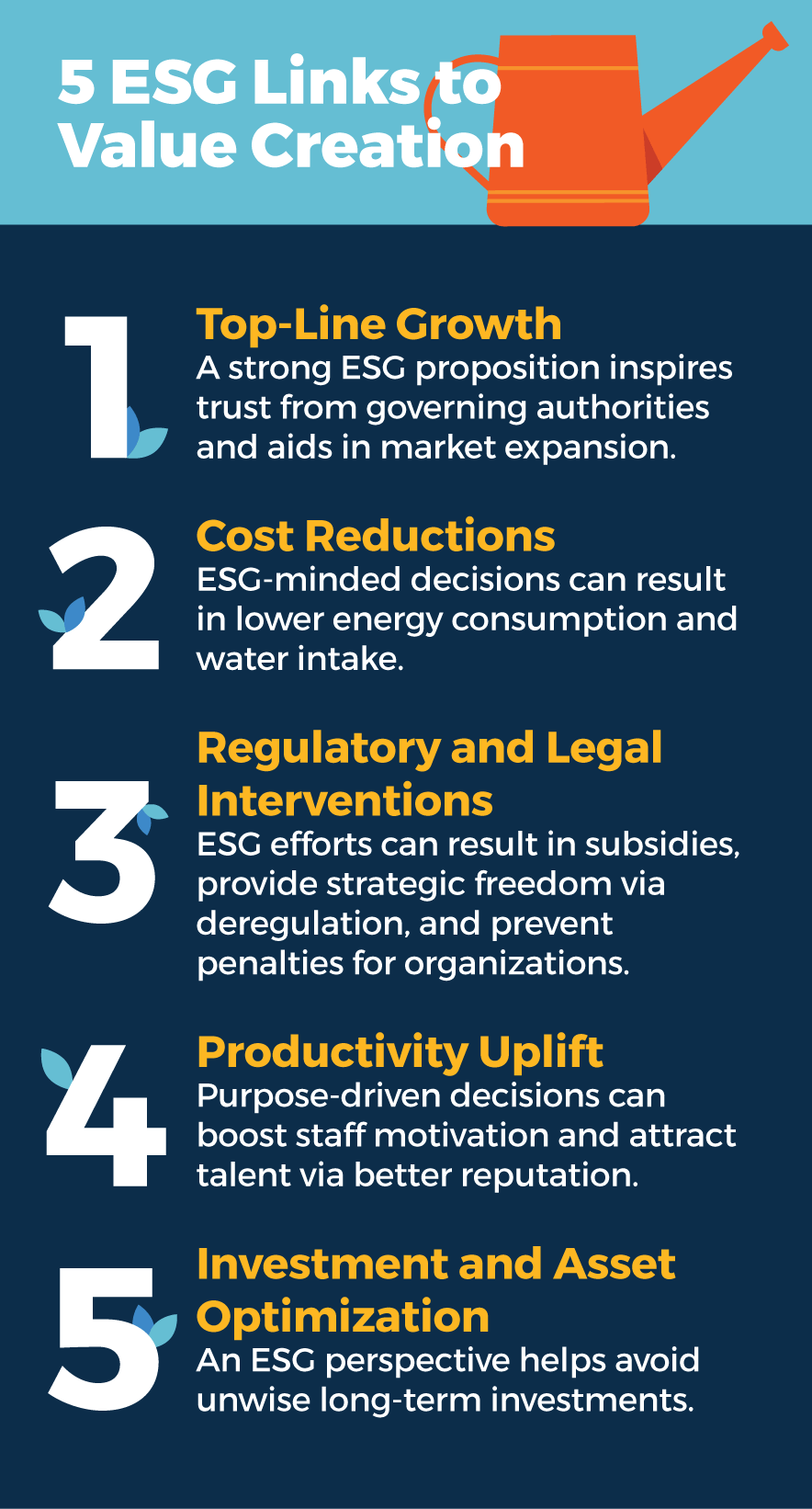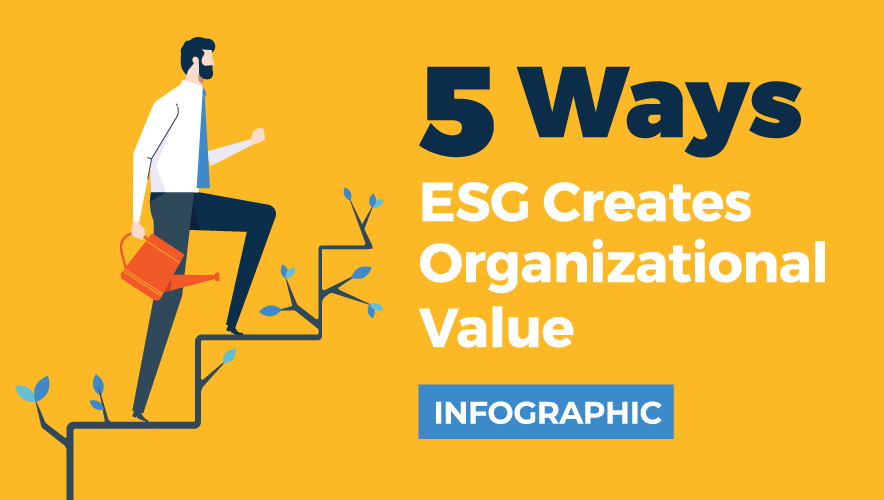5 Ways ESG Creates Organizational Value
“Profits are in no way inconsistent with purpose—in fact, profits and purpose are inextricably linked.” So concluded BlackRock CEO Larry Fink in his influential 2019 letter to CEOs about purpose-influenced investment. This perspective—which has gained popularity among major global investment firms—drove many organizations to inspect and adopt ESG: environmental, social, and governance initiatives.
In his 2022 letter, Fink claimed that stakeholder capital and investing, including those with environmental or social issues in the forefront, are not political or “woke,” but instead “about building deeper, broader connectivity with your stakeholders, and for that, you’re building that durable profitability,” he told CNBC.
“Businesses need to play the long game,” according to a 2019 McKinsey Quarterly report. “That means they need to satisfy the needs of their customers, employees, and communities—these days, often a global community—in order to maximize value creation. Thriving businesses concerned with long-term horizons fuel a virtuous cycle. They create jobs, increase tax revenue, and raise standards of living. ESG helps generate wealth, and wealth is not a fixed pie.”
So, how does ESG benefit shareholders and organizations, as well as the communities they inhabit?















